Related Research Articles
A minister of state is subordinate to a minister, who heads a ministry. The minister covers the entire ministry and the minister of state assists and performs other functions as assigned by the minister.
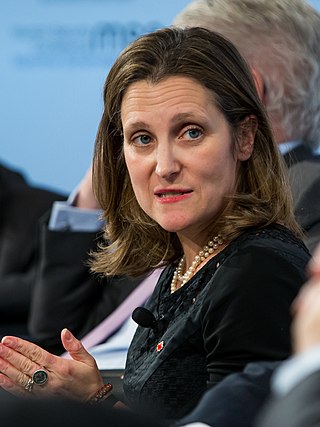
The deputy prime minister of Canada is a minister of the Crown and a member of the Canadian Cabinet. The office is conferred at the discretion of the prime minister and does not have an associated departmental portfolio. Canadian deputy prime ministers are appointed to the Privy Council and styled as the Honourable, a privilege maintained for life.
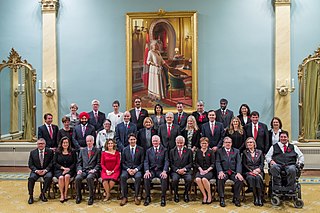
The Cabinet of Canada is a body of ministers of the Crown that, along with the Canadian monarch, and within the tenets of the Westminster system, forms the government of Canada. Chaired by the prime minister, the Cabinet is a committee of the King's Privy Council for Canada and the senior echelon of the Ministry, the membership of the Cabinet and Ministry often being co-terminal; as of November 2015 there were no members of the latter who were not also members of the former.
The minister of Science is a vacant office that was in the Cabinet of Canada and existed under various forms from 1971 to 2019, when the portfolio's responsibilities were absorbed into the innovation, science and industry portfolio.
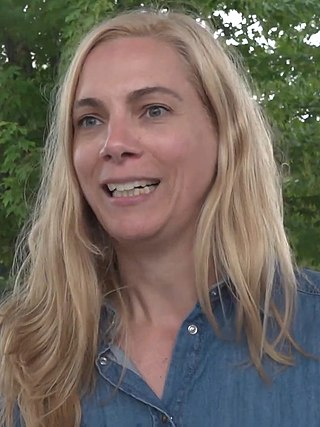
The minister of Canadian heritage is the minister of the Crown who heads Canadian Heritage, the department of the Government of Canada responsible for culture, media, sports, and the arts.

A. Anne McLellan is a Canadian politician and academic who served as the ninth deputy prime minister of Canada from 2003 to 2006. She was a cabinet minister in the Liberal governments of Jean Chrétien and Paul Martin, and represented Edmonton in the House of Commons of Canada. She also held the positions of solicitor general, minister of health, and minister of justice of Canada.
A minister without portfolio is either a government minister with no specific responsibilities or a minister who does not head a particular ministry. The sinecure is particularly common in countries ruled by coalition governments and a cabinet with decision-making authority wherein a minister without portfolio, while they may not head any particular office or ministry, may still receive a ministerial salary and has the right to cast a vote in cabinet decisions.
A parliamentary secretary is a member of Parliament in the Westminster system who assists a more senior minister with their duties. In several countries, the position has been re-designated as assistant minister.

The associate minister of national defence is a member of the Canadian cabinet who is responsible for various files within the defence department as assigned by the prime minister or defence minister.

The minister of justice and attorney general of Canada is a dual-role portfolio in the Canadian Cabinet.
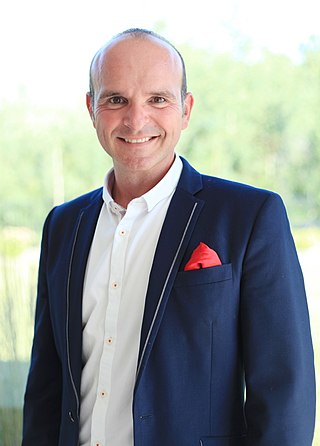
The minister of Employment, Workforce Development and Official Languages is the minister of the Crown in the Canadian Cabinet who is responsible for Employment and Social Development Canada, the Government of Canada department that oversees programs such as employment insurance, the Canada pension plan, old age security, and Canada student loans.
In Canada from 1993 to 2003 and again from 2007 to 2008, secretary of state was a title given to junior ministers of state in the Government of Canada that sat outside Cabinet. Because it was a position that was assigned to assist Cabinet ministers, a secretary of state was legally a minister of state; the distinction is that, unlike a minister, a secretary is not a full cabinet portfolio itself and thus not considered a member of Cabinet. (They were hence considered junior to ministers of state.) The Secretary of State (Training and Youth), for instance, would assist the Minister for Human Resources and Development. This usage is opposite to that in the United Kingdom, where junior ministers generally report to more senior secretaries of state. Secretaries of state were, however, members of the ministry and the Queen's Privy Council for Canada.
Deputy minister is a title borne by politicians or officials in certain countries governed under a parliamentary system. A deputy minister is positioned in some way ‘under’ a minister, who is a full member of Cabinet, in charge of a particular standing policy portfolio, and typically oversees an associated civil service department. Depending on the jurisdiction, a "Deputy minister" may be a Cabinet minister who regularly acts as and for a more senior cabinet minister, a junior minister assigned to assist a cabinet minister, an elected member of the governing party or coalition assigned to assist a specific cabinet minister ‘from the back benches’ or a non-elected head of a civil service department taking political direction from a Cabinet minister.
The Minister of Democratic Institutions was a Minister of the Crown in the Canadian Cabinet, associated with the Privy Council Office. The position was first created in 2003 as "Minister responsible for Democratic Reform". It was also titled "Minister responsible for Democratic Renewal" and "Minister of State " during various governments. The position was abolished on November 20, 2019.
The Public Health Agency of Canada is an agency of the Government of Canada that is responsible for public health, emergency preparedness and response, and infectious and chronic disease control and prevention.

The Office of the Prime Minister (commonly called the prime minister's office or PMO comprises the staff that supports the prime minister of Canada and is located in the Office of the Prime Minister and Privy Council Building in Ottawa, Ontario. The PMO provides policy advice, information gathering, communications, planning, and strategizing. It should not be confused with the Privy Council Office, which is the higher office that controls the Public Service of Canada and is expressly non-partisan; the PMO is concerned with making policy, whereas the PCO is concerned with executing the policy decisions made by the government.
The title secretary of state or state's secretary is commonly used for senior or mid-level posts in governments around the world. The role varies between countries, and in some cases there are multiple secretaries of state in the country's system of governing the country.
The minister of families, children and social development(French: ministre de la famille, des enfants et du développement social) is a minister of the Crown in the Cabinet of Canada. The associated department is Employment and Social Development Canada.
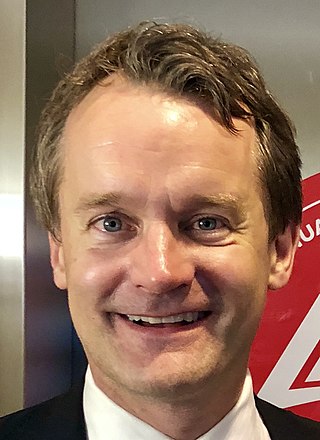
The minister of Labour is the minister of the Crown in the Canadian Cabinet who is responsible for the labour portfolio of Employment and Social Development Canada. From 2015 to 2019, the portfolio was included in that of the Minister of Employment, Workforce Development and Labour, but was split in 2019 during the government of Justin Trudeau.
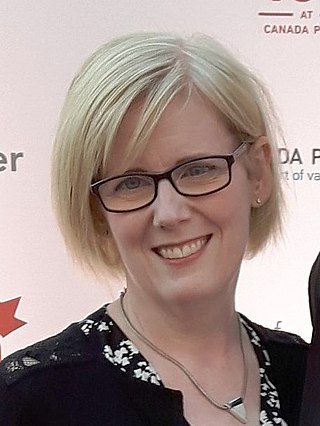
The minister of Sport and Physical Activity is a Government of Canada cabinet minister responsible for Sport Canada, who typically assists the minister of Canadian Heritage.
References
- ↑ Fraser, Graham (February 7, 2006). "Cabinet ranks reduced to 27; Shakeup aims to cut process, costs Harper to chair key committee". Toronto Star – via Maclean's.
- ↑ "Appointments" (PDF). Canada Gazette, Part I. Ottawa. 140 (8): 391–395. February 25, 2006. ISSN 1494-6076.
- ↑ Bucholtz, Andrew. "Can new minister for sport Carla Qualtrough use her experience to create change?". Yahoo! News . Yahoo! Canada. Retrieved 5 November 2015.
- 1 2 3 4 "Departments and Roles: 1867 - Today". lop.parl.ca. Retrieved 2021-04-29.
- ↑ Minister of State (Children and Youth) Website
- ↑ Ries, Nola M.; Caulfield, Timothy (2005). "Legal Foundations for a National Public Health Agency in Canada". Canadian Journal of Public Health. 96 (4): 281–283. doi:10.1007/BF03405164. PMC 6975730 . PMID 16625796.
- 1 2 Bennett, C. (2004). "Building a national public health system". Canadian Medical Association Journal. 170 (9): 1425–1426. doi:10.1503/cmaj.1040580. PMC 395818 . PMID 15111478.
- 1 2 "Federal government hasn't filled top doctor's job, 15 months later". Ottawa Citizen. 19 September 2014.
- ↑ Raphael, Dennis; Bryant, Toba (2006). "The state's role in promoting population health: Public health concerns in Canada, USA, UK, and Sweden". Health Policy. 78 (1): 39–55. doi:10.1016/j.healthpol.2005.09.002. PMID 16223545.
- ↑ "GOVERNMENT OF CANADA ANNOUNCES DETAILS OF NEW PUBLIC HEALTH AGENCY OF CANADA AND APPOINTS ACTING CHIEF PUBLIC HEALTH OFFICER". Government of Canada. 2004-05-17. Retrieved 3 April 2021.
- ↑ Bernier, N. F.; Burlone, N. (2007). "Breaking the deadlock: Public health policy coordination as the next step". Healthcare Policy. 3 (2): e117-27. PMC 2645169 . PMID 19305772.